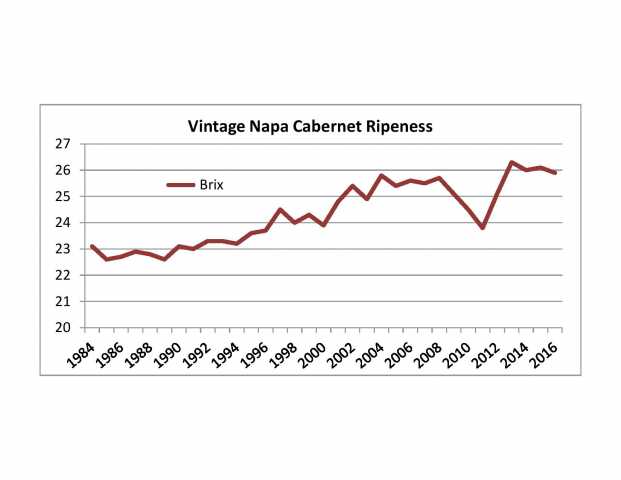Noah - were you trying any of the wines back then? It’s not about Parker so much as it was about learning and the explosion of wineries. Back in the 1970s there were very few and the market was pretty small and they were modeling on Bordeaux, notwithstanding the fact that the climate was so different.
As time went on, they found out that sunlight eliminated some of the green qualities in the Cab family, and riper, cleaner grapes made better wine. So people pushed that and pushed it and some wines got hyper-ripe. If you make a big, thick wine and get high points or at least a lot of buzz, maybe I’ll try it. But now you have a bit of a name, so two or three other people ask you to make their wine. Helen Turley made Pahlmeyer in the 1990s. The early and mid 90s Merlots were some of the best ever from CA. She also made Turley Zins until she stepped out of that role sometime in the mid 90s. Those were super-ripe and flashy wines.
Other people became interested in making Zin like that so similar wines hit the market. She mentored other winemakers, who emulated her style and yet more wines hit the market.
That happened with a few wine makers, so their philosophies were spread around. And then of course, you had the M&A people from Wall Street who wanted to flash money, so “cult” wines were born. In the crash in the early 2000s, coupled with 9/11, some of those wines lost their market and never recovered.
Some wines changed styles in the mid to later 1990s but that’s in part also a function of the explosion of wineries. At Grgich alcohol levels went up in the late 1990s. A few years later Pahlmeyer got new vineyards and wine makers. But more than that, a lot of new wineries or wine producers came into being and a lot of those newcomers hired the same people who had made their reps making the wines that were selling. Most of those new wineries didn’t even exist in 1991 and earlier, so it’s not necessarily accurate to talk about a style shift, although it is true that some wines did change style. But BV only changed in 2007 and they pre-date pretty much everyone except for a small handful.
So if you’re talking about “holding out”, it doesn’t really make a lot of sense for many wineries because they weren’t there before and had nothing to hold out against. And you’re mostly talking about Napa Cab and perhaps Zin. In 1970, there were 250 bonded wineries in CA. Then comes the Paris tasting in 1976 and the number increases to around 500 in 1980. Today there are over 4500.
At this point, if you own land in Napa, and even more if you buy land in Napa, you’re going to make Cab and you’re going to make a style that’s going to sell. It would be pretty stupid to do otherwise because you’ll end up with a garage full of your own wine that you can’t move and you’ll never recoup your investment. So although they could probably do something extraordinary with say, Sangiovese, that’s not going to come from Napa.
But there’s ever more diversity in California and I think the wine making is better than ever.
As far as 1997, when those came out they were mostly just flat out delicious. That may have been the peak year for ready-to-drink Cab-based wines. They had a great string of vintages up to that one, but that kind of capped it. Then after a few years, the wines weren’t improving. Today I think the 1994s, which were highly lauded on release, as well as the 1991s and 1992s, have turned out to be better long-term bets.
But did you buy the wine to age or to drink at peak? If those wines peaked early, the thing to do was to drink them early. Some CA Cabs, and especially Napa Cabs, can age and improve for years. But most probably are good to go right away. And not everyone likes aged Cab/Merlot as much as they like it young.

